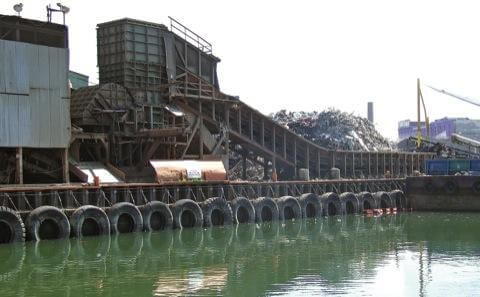By Jeremy Walsh
The borough’s most notorious polluted waterway got one step closer to a major cleanup last week when the federal Environmental Protection Agency announced it would recommend that Newtown Creek be placed on a national priority list for Superfund status.
The creek, which divides Long Island City and Maspeth from Brooklyn, is home to the largest coastal oil spill in American history along with 446,000 residents who live on its banks.
U.S. Reps. Anthony Weiner (D-Forest Hills) and Nydia Velazquez (D-Ridgewood) celebrated at the news. Last year the legislators helped convince the EPA to conduct a new series of tests at four high-priority sites along the creek to better gauge the scale of the contamination.
“While the oil companies lag in their clean-up responsibilities and put the health and safety of Newtown Creek’s residents at further risk, the EPA has decided to take action and hold these companies responsible for their negligence,” Weiner said.
The creek was the center of the city’s petroleum production industry in the 19th and early 20th centuries. The spill is believed to have begun between 50 and 100 years ago, and ExxonMobil agreed to remove petroleum from the ground underneath Greenpoint, Brooklyn, in 1990.
“The contamination in and around Newtown Creek is of catastrophic proportions and Greenpoint residents have suffered the consequences for too long,” Velazquez said.
The EPA will now wait 60 days to allow for public comment about the site. If the creek is designated a Superfund site, a four-step clean-up process will begin.
First, workers would stabilize the site to stop any immediate threats to the community by erecting a security fence or repairing a hazardous waste storage unit.
Then the EPA would investigate the site and analyze cleanup options, develop a plan and either perform the cleanup itself or force responsible parties to do the necessary work.
When it was first discovered by a U.S. Coast Guard helicopter in 1978, the Newtown Creek spill was originally estimated at 17 million gallons — 1 1/2 times larger than the notorious 1987 Exxon Valdez spill in Alaska. Some activists believe the size of the spill is actually much larger.
Reach reporter Jeremy Walsh by e-mail at jewalsh@cnglocal.com or by phone at 718-229-0300, Ext. 154.
































